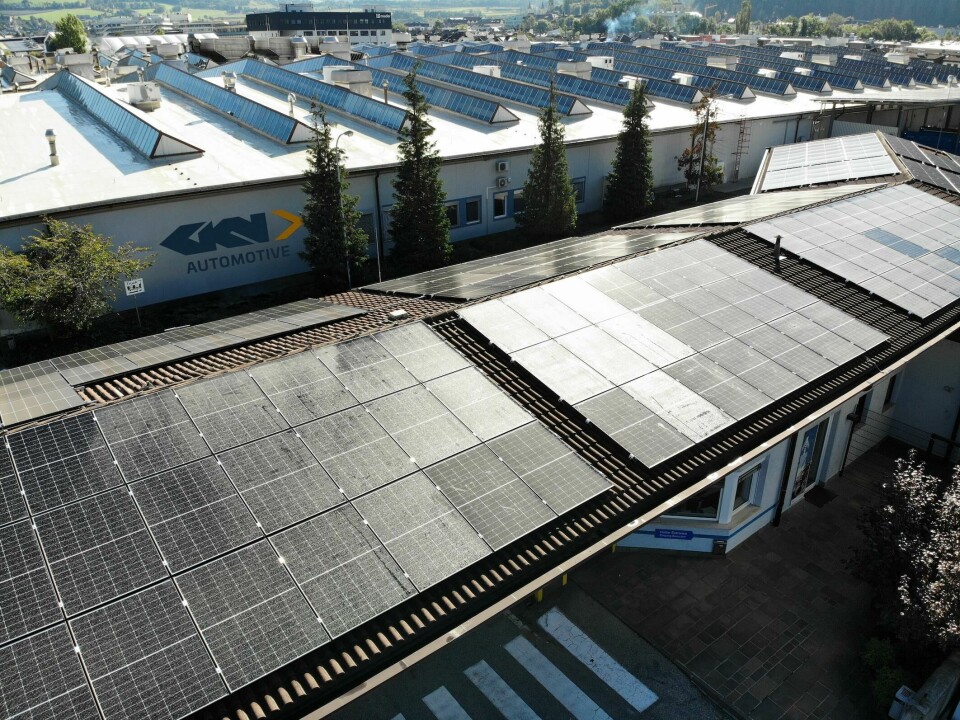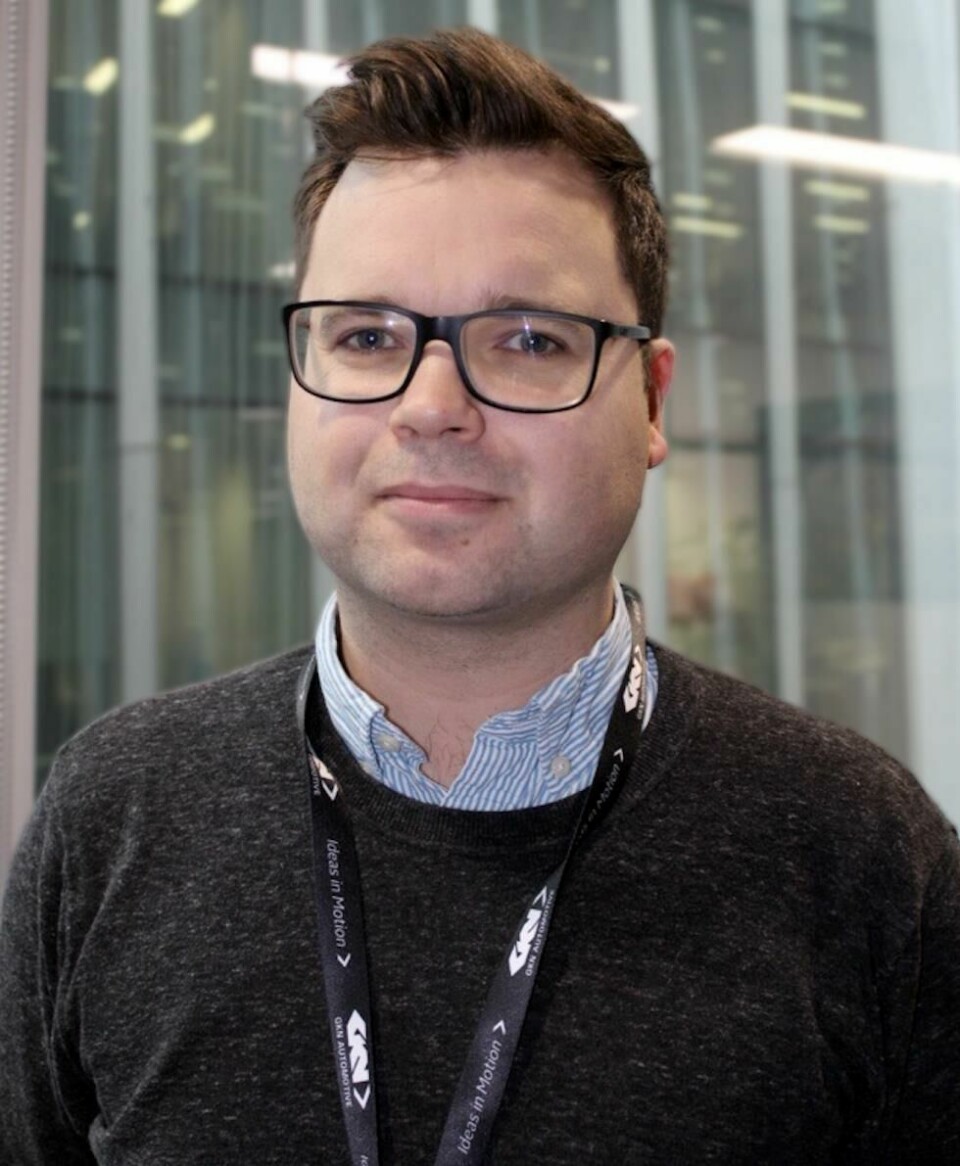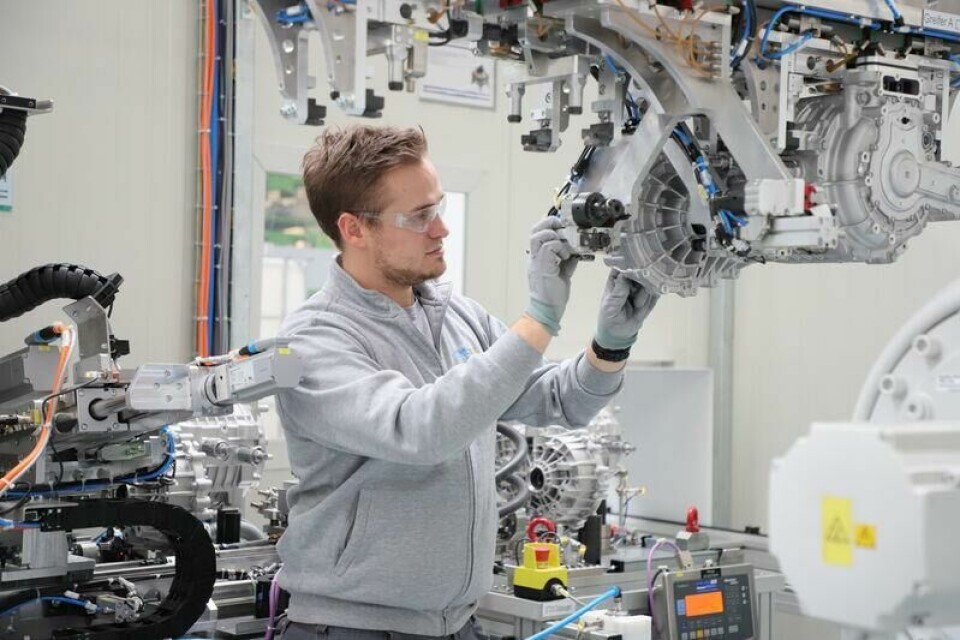
GKN Automotive – Embedding sustainability in the business
GKN Automotive’s director of sustainability, Tom Salisbury discusses the importance of Science Based Targets, managing supply chains and the need to embed sustainability throughout the organisation.
Salisbury joined GKN Automotive as director of sustainability last year with a remit to lead and accelerate the delivery of the company’s sustainability strategy. With more than 15 years of experience in the sustainability sector, Salisbury’s remit includes GKN Automotive’s 47 production locations around the world. Salisbury spoke with AMS about his role, embedding sustainability in teams across the business and managing both customer expectations and supply chain visibility.

Can you provide a brief overview of your role with GKN and the scope of your remit?
I’m director for sustainability. So, I have that oversight of our sustainability strategy, and that covers both the environmental and social responsibility side of things, such as diversity and inclusion, and the impact that we have in communities.
I look at progress against our targets and working cross-functionally to make sure that the strategy is being delivered in the organisation. Some of the work had already been done before I started in terms of defining the strategy and some of the targets, then in the last year, it’s been about picking that up and making sure we’ve got a plan to reach those targets.
What’s noticeable since joining is just the increase in requirements and requests from customers and how this is being cascaded into supply chains. So that’s a big focus for me, making sure we are aligning to the requests from our customers, both in terms of data, but also in the commitments that we make to them as well.
GKN now has Science Based Targets initiative (SBTi) approval on its emission reduction targets. What will this mean for the company’s sustainability strategy?
It helps set our ‘north star’ of where we need to get to. I think the real benefit of SBTi is that it is a thorough vetting process in terms of making sure you have a good baseline, and that your ambition is in line with what’s needed to reach the Paris Agreement targets.
Part of the battle is defining where you want to get to, and making sure that’s realistic. So, before we set the SBTi, and it was actually just before I joined, a lot of work went into modelling what’s possible. For example, they audited some of our sites to understand the key requirements we would need to get those sites to net zero, such as looking at how we purchase electricity, which is the biggest operational part of our carbon footprint.
SBTi also covers your scope three emissions. It’s a great achievement getting the target defined and having that approval. But now we need to really focus making sure we are on track to meet those 2045 targets.
GKN has 47 production sites. How are you managing sustainability projects at both network and plant levels?
We have manufacturing engineering teams that look at how we can improve things like energy efficiency at our sites, and also looking at operational opportunities such as on-site solar array potential. The dedicated teams at the different sites are responsible for the environmental reporting and looking at potential improvements.
Across GKN’s operations where do see the most opportunity in terms of emission reduction, and where are the biggest challenges?
If we look at our operating direct emissions scope one and scope two, electricity consumption is the biggest part of our carbon footprint, so we are looking at how and where this is sourced. We are actively looking at power purchase agreement (PPA) opportunities.
Buying sustainable electricity, coupled with improving energy efficiency, will be important and offer good opportunities to reduce emissions.
Does the ongoing electrification of the product range operate on a separate path to the operational sustainability programme?
No, we integrate it all as part of our overall strategy. We have a team in engineering who are looking at our product sustainability side of things. So, where we can reduce the operational carbon footprint, and how can we reduce the carbon footprint of the materials used in the product, designing components with circularity in mind.
Our customers increasingly want to understand the life cycle of a product. So, they are asking for life cycle analysis on the products that we’re producing. And that’s not just about the carbon emissions associated with the product in our operations, it goes through to our supply chain. When we report on our total carbon emissions or scope one, two and three, that covers everything as well. Obviously, there are different areas of focus, but we make sure that our sustainability strategy covers this as a whole.

Could you share some insights into some manufacturing operations sustainability projects?
Our plant at Bruneck in Italy, is one of the sites where we’ve done a lot of work, such as using groundwater cooling, which is saved energy. We’ve recently installed an on-site solar array there as well.
Then also across some of our other Asian sites, but in India particularly, like our Pune site, for example, they have done a lot of work on on-site solar or purchasing, and there’s some good regulatory incentives in India that support the financial viability of these projects.
Also, the work that we’ve done on encouraging a positive culture around sustainability projects has helped with these projects. For example, last year at our Vigo site in Spain we had a sustainability competition for employees to propose ideas to reduce the environmental impact of the site. One of the winning ideas helped reduce gas consumption by 2% a year.
Engaging employees in this way is obviously very positive. Is that something that you’re doing across the whole network? Are you introducing any training in relation to sustainability?
The competition worked really well, and I think that’s something we probably will look at doing more of at a global level. On training, we’ve run some in person sustainability training workshops for more senior representatives in commercial and procurement, but in the next few months we’re going to be launching an e-learning programme and I think that will be a really good resource because one of the things about sustainability is everyone has a role to play and not just the environmental side but also the social responsibility and diversity inclusion.
How challenging is managing the scope 3 (supplier) requirements and how will this be integrated into GKN’s sustainability strategy and programmes?
This year we rolled out a supply assessment questionnaire to our strategic suppliers, which covers human rights and compliance as well as environmental considerations, but I think it will require more work with suppliers. For example, we now hold an annual supplier conference where we cover sustainability and our targets and what we’re going to need from our suppliers.
If you take the total carbon footprint of an ICE vehicle compared to an EV, what’s interesting is the majority of scope one and two carbon emissions of the ICE vehicle come from the use of that car. Whereas when you take it for an EV, the largest proportion then becomes the scope three upstream, which is the supply chain.
It’s logical that as we move to EVs the total carbon footprint is going down significantly, but what’s left is focused on the supply chain. That’s why we have our product sustainability office, looking at our suppliers and the materials that we’re using and how we can reduce the carbon footprint of our products.
Do you see sustainability teams in global businesses like GKN having to expand to meet all these sustainability targets?
I think you will need more people working on the sustainability issues. I’m not sure if that will mean increasing the number of specific sustainability teams or just having more people in HR who are focused on the diversity and inclusion agenda or in our engineering teams focusing on the innovations to reduce the carbon footprint of our products.
Certainly, this is a growing agenda, and we will need more resource. Whether that’s in a specific sustainability team, or its embedded resource varies by organisation, but I think it’s key to have sustainability embedded throughout the organisation.


